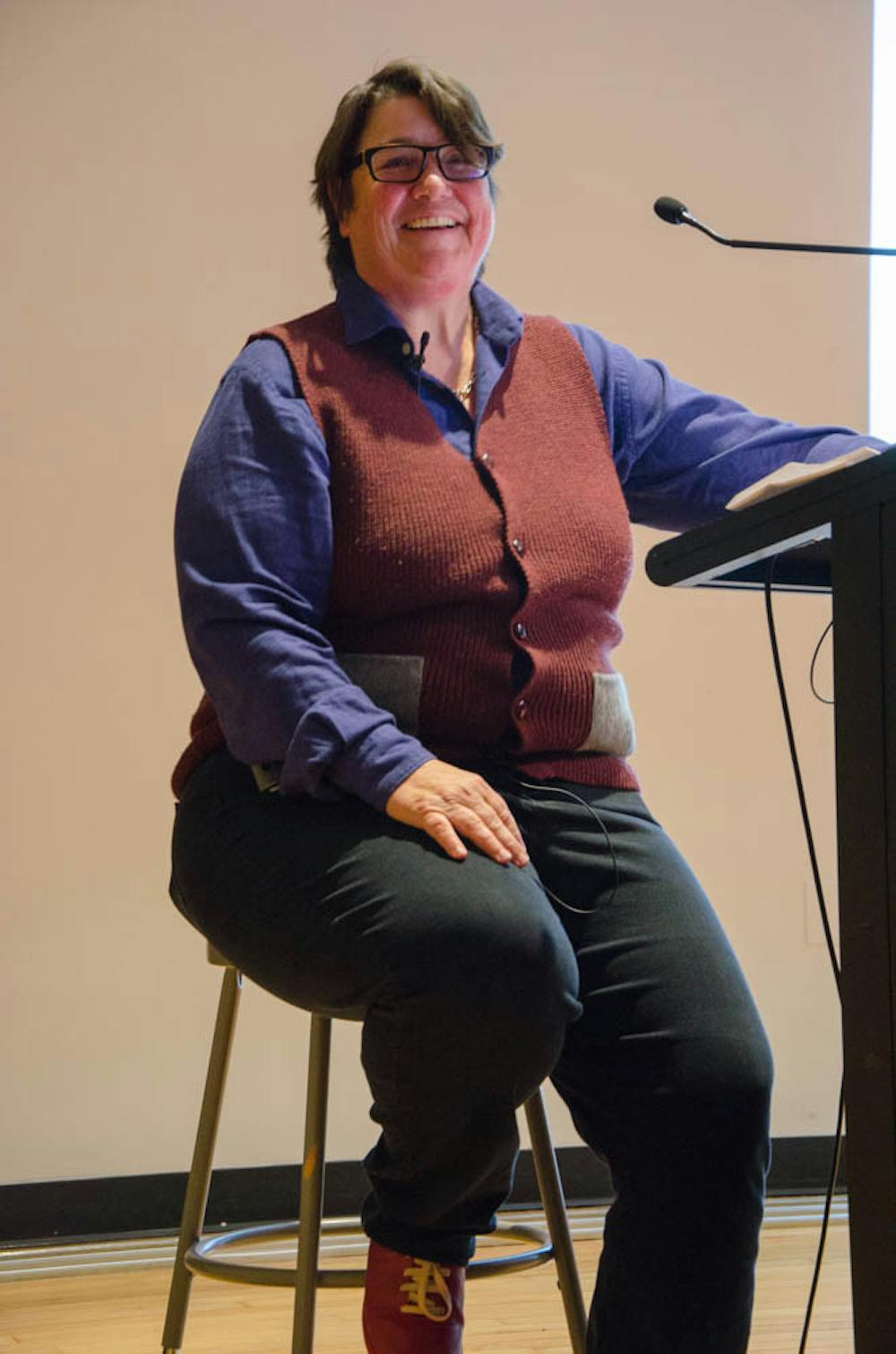Nearly all the seats in the List Art Center Auditorium were filled Wednesday evening as individuals from both inside and outside the University community gathered to listen to professional photographer Catherine Opie speak.
Opie, currently a professor of photography at the University of California at Los Angeles, visited Brown as part of the Visiting Artist series sponsored by the visual art department. She stood in front of a slideshow projection of selected pieces from her impressive body of work, which dates back to the early 1990s. The photographs all differed in medium, including polaroids, platinum prints and, more recently, digital photography.
Much of Opie’s work centers around LGBTQ culture and community, documenting the lives and identities of LGBTQ individuals across the United States. Opie, who identifies as a lesbian woman, emphasized wanting to “humanize” LGBTQ individuals beyond their typical depictions in modern media.
“So much (queer artwork) was being done but was always in (relation) to erotica,” she said. “I really wanted that idea of humanity, and to begin to create a representation of my own community (in my work).” Several of the artist’s series, including “Domestic,” a collection of photos of queer women in domestic relationships from all over the country, exemplify this effort at humanized representation.
Other pieces are, in contrast, much more graphic. For example, two of Opie’s self-portraits, “Self-Portrait/Cutting” and “Self Portrait/Pervert,” feature the use of cutting, in which designs were carved into the artist’s skin, leaving bloody contours that were then photographed in high resolution. “Blood is something that’s inside of you. It’s something that you’re taught to be afraid of,” Opie said. “I’m interested in (the idea that) it’s this substance that I don’t really need to fear.”
Opie’s work is not limited by genre or subject matter, with photos ranging from snowy landscapes verging on the surreal to intense and personal portraits of close friends. “I traverse a lot of territories and relationships in my medium. … I’m versatile as an image-maker,” Opie said, adding that she did not want to be reduced to “a singular identity” by the content she creates.
Naturally, when the art world began to typecast her portraiture, she transitioned to photographing landscapes, commencing her work on “Freeways,” a series of small platinum prints of Southern California’s highway system. “After the original showing of ‘Pervert,’ there was definitely a huge … buzz around my work in terms of being this young, queer, didactic artist. So I switched it up on everybody by making these little freeways,” Opie said.
Sometimes Opie’s work is political: She has captured images of former President Barack Obama’s inauguration, as well as Tea Party rallies and the most recent Women’s March — work she describes as “bearing witness at a specific time within American history.” Sometimes it is conceptual: Nowadays, she primarily focuses on allegory and abstraction, a set of what Opie referred to as “post-menopausal works.”
To Opie, photography is more than just an art. “(It) holds much more meaning outside of your one self.” Each of her photographs carries a deep personal meaning. For example, much of her portraiture of LGBTQ individuals also serves as a reflection on the devastating impact of the AIDS crisis — “an homage and a mourning of friends that I had to say goodbye to,” Opie said.
Ultimately, “art should be about creating dialogue,” Opie said, adding that artists both wield great power and carry great responsibility. For her part, Opie tries to wield that power responsibly, always ensuring that her subjects are comfortable with the images she releases, she said. “I’ve only been sued one time,” she remarked humorously.





